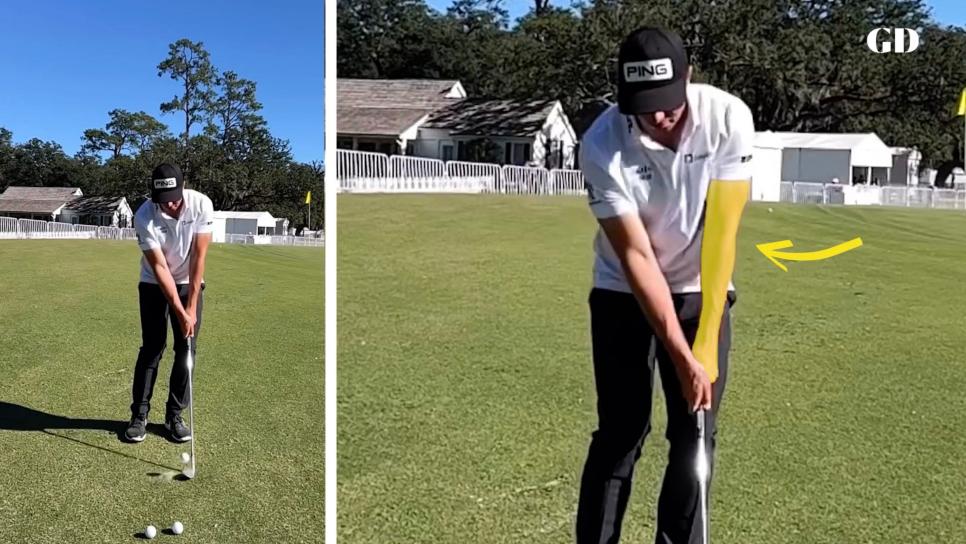Golf is hard
Viktor Hovland said he 'sucked' at chipping. Here's how he's fixing it.

Viktor Hovland is a world class ball striker, which begs the question: How can an elite player, in Hovland’s own words, “suck” so much around the greens.
The answer lies in Hovland’s golf swing. Look closely, and you’ll find it's those same moves that make Hovland so good from tee-to-green, that plagues him around the greens.
Confused? Watch the video below to learn more.
Viktor Hovland’s golf swing is littered with elements that modern coaches love. Specifically, a bowed left wrist at the top of his backswing, much like Dustin Johnson or Jon Rahm. This has the effect of closing the clubface, which is why compared to a player like Rory Mcilroy, whose clubface is pointing more toward his head, Hovland’s clubface is pointing towards the sky.
For most golfers this would cause a hook, but Hovland is strong and athletic. He hits a baby fade, because on his downswing, he uses tons of body rotation and crucially, pulls his left arm off his chest. This unique combination leans the shaft forward and allows him to square the clubface in a remarkably repeatable way, even compared to other tour players.
When PING measured Hovland's golf swing in 3D, they discovered that his clubface closes at a lower rate than any other player they've ever recorded.
Think about this like a ping pong player using one of those penhold grip. Hovland isn't taking wild swings with his racket and sending the ball everywhere. He holds the clubface stable for most of his backsiwng and downswing, for maximum consistency and control.
Simply put, there’s very little that can go wrong.
Add in Hovland's speed, and you've got a world class ballstriker. So good that in every year Hovland has been a professional, he’s ranked in the top 30 on the PGA TOUR in Strokes Gained Off-The-Tee and Strokes Gained Approach.
But that’s also the move that creates issues for Hovland around the green.
On shorter shots, Hovland needs the opposite of what comes naturally. He needs more clubface rotation and less shaft lean, so he can take advantage of the loft and bounce of the wedge — the literal way the golf club is designed. The short game relies on the small muscles in your hands and wrists. It’s why Luke Donald and Seve such artists around the green (you can learn more about Donald's short game wizadry right here)
Hovland is the reverse, as his coach at the time Jeff Smith explained:
When those full swing moves creep into his chipping motion, it creates a lot of shaft lean and sends the leading edge of his wedge straight into the turf, like a shovel going into dirt.
When that happens, Hovland starts chunking his chips, as he explained early this season:
"What I do in the full swing does not necessarily lend itself for good short game technique. So I've just had to find ways to make my short game work without, as I said earlier, changing kind of my DNA. I'm trying to use my upper body more to control the speed of the shot and almost feel like my head is raising up and getting out of the ground because you don't have speed or time as a luxury in the short game."
That's the task ahead for Hovland: Trying to re-learn an entirely new movement. One that isn't in Hovland’s "DNA" and doesn't always feel natural.
You can learn him explain how he's fixing it in the video below: